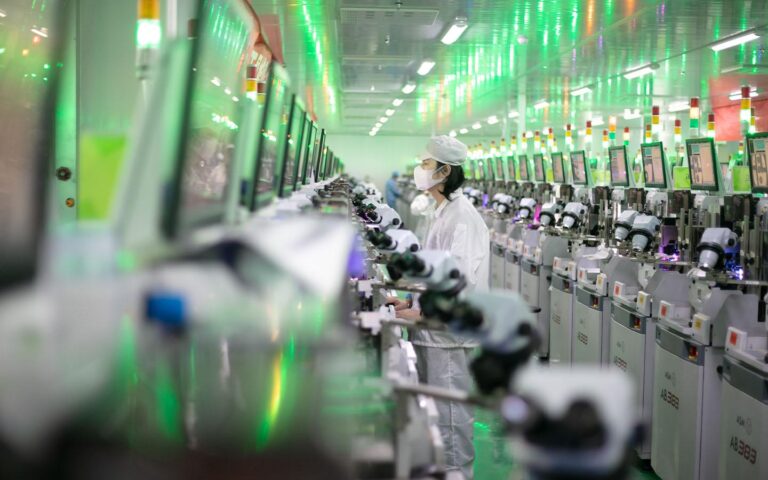China’s latest Purchasing Managers’ Index (PMI) data, as reported by The Wall Street Journal, signals a continued contraction in the country’s manufacturing sector. Amid ongoing economic headwinds and global uncertainties, the declining PMI underscores mounting challenges faced by Chinese manufacturers, raising concerns about the sector’s near-term outlook and its broader implications for the global economy.
China Manufacturing Sector Faces Prolonged Downturn Amid Slowing Demand
The latest Purchasing Managers’ Index (PMI) data reveals a persistent contraction in China’s manufacturing landscape, driven largely by subdued domestic and international demand. Key sectors such as electronics, machinery, and automotive are reporting lower order volumes, leading to decreased factory output and cautious inventory management. Manufacturers have also flagged ongoing challenges in supply chain logistics and rising operational costs that compound the pressure on margins.
Critical factors influencing the downturn include:
- Weakening export demand amid global economic uncertainties
- Softening consumer spending domestically
- Delayed capital investments due to market volatility
| Sector | PMI Index | Month-on-Month Change |
|---|---|---|
| Electronics | 47.3 | -0.8 |
| Machinery | 48.1 | -0.5 |
| Automotive | 46.7 | -1.2 |
Supply Chain Disruptions and Domestic Challenges Weigh on Industrial Output
Industrial output in China has experienced mounting pressure as recent data points to intensifying supply chain disruptions coupled with persistent domestic issues. Factories are grappling with delays in sourcing critical components, resulting in slower production rates and decreased operational efficiency. Moreover, intermittent power shortages in key manufacturing hubs have compounded the strain, forcing several plants to reduce or temporarily halt output.
Key factors influencing the slowdown include:
- Global logistics bottlenecks impacting raw material shipments
- Rising costs of energy and transportation within China
- Labor shortages due to fluctuating COVID-19 restrictions
- Elevated inventory levels hindering fresh orders
| Sector | Month-over-Month Output Change |
|---|---|
| Electronics | -3.7% |
| Automotive | -2.4% |
| Textiles | -1.8% |
Experts Urge Policy Reforms and Targeted Stimulus to Revive Manufacturing Growth
Industry specialists emphasize that merely monitoring declines will not arrest the downturn in China’s manufacturing sector. They advocate for comprehensive policy reforms that address structural inefficiencies and boost competitiveness. Key proposals include streamlining regulatory processes, incentivizing innovation, and enhancing supply chain resilience. Experts also highlight the importance of adapting labor policies to better support workforce transitions and elevate skill levels in emerging manufacturing technologies.
In addition to reforms, targeted fiscal stimulus measures are considered critical in reigniting growth momentum. Strategically directed funding could invigorate small and medium-sized enterprises (SMEs), which are particularly vulnerable amid tightening credit conditions. The table below outlines the primary stimulus recommendations and their intended impact:
| Stimulus Measure | Focus Area | Expected Outcome |
|---|---|---|
| Credit Support Programs | SME Financing | Increased liquidity and operational capacity |
| R&D Tax Incentives | Innovation & Technology | Enhanced product development and modernization |
| Export Subsidies | Global Competitiveness | Expanded international market share |
| Infrastructure Investment | Logistics & Supply Chains | Reduced costs and improved efficiency |
The Way Forward
As China’s manufacturing sector shows further signs of contraction, market watchers and policymakers alike will be closely monitoring upcoming data for indications of whether this trend will persist or stabilize. The continued decline in the PMI underscores the challenges facing China’s industrial base amid a complex global economic landscape, raising questions about the potential impact on supply chains and international trade in the months ahead.




